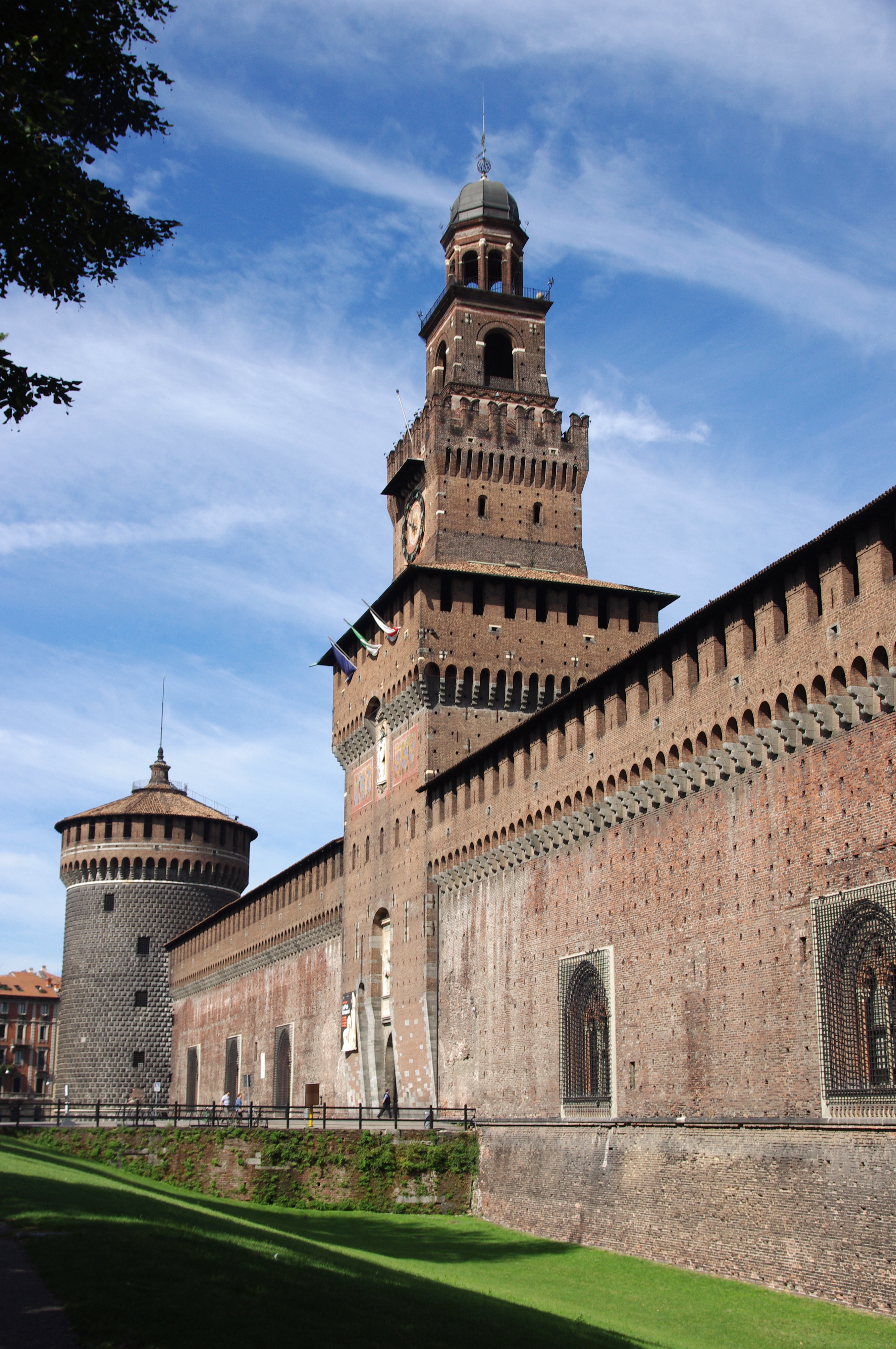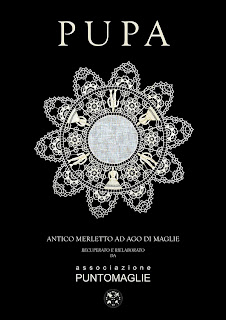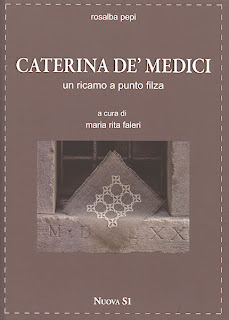UPDATE: Originally I had erroneously posted that the exhibition would be held at the Palazzo Davanzati when, in fact it will not be. The venue for the exhibition will be the Palazzo Borghese in Florence, located 600 metres away (Google says a 7 minute walk) from the Palazzo Davanzati.
The Club del Punto in Croce is organizing an International Textile Art Exhibition called "The Chatelaine de Vergy" to be held at the Palazzo Borghese, at No. 110 Via Ghibellina in Florence November 9 - 30th, 2013.
The theme of this exhibition is the story of The Chatelaine de Vergy, a 13th century French chivalric romance which inspired the frescos done in one of the bedrooms of the Palazzo Davanzati (picture above), which is a different palazzo in Florence.
For reasons of space availability and hours of operation, the exhibition will be held at the Palazzo Borghese in Via Ghibellina which lies 600 metres away from the Palazzo Davanzati.
You can read an English version of this tale by downloading a free pdf file here. The original tale was written in French and translated into Italian and if you search for images with the terms: "La Castellana di Vergy" you can see some of the frescos from the Palazzo Davanzati.
The exhibition will be comprised of the textile works of all those who wish to enter a piece of work inspired by the frescos and/or furnishings of the Palazzo Davanzati.
Art, history, cultural research and dexterity are the ingredients of this exhibition and the Club del Punto in Croce hopes this will bring about fascinating creations of embroidery, lace, macramé, quilting and other textile arts to be admired by multitudes of enthusiasts and others who are interested in the ancient handicraft techniques for which Florence has been particularly known worldwide for centuries.
I have translated the rules for entry here below:
Books are available at the Palazzo Davanzati with reproductions of the rooms of the Museum for source material. The Museum is open from Tuesday to Saturday from 8:15am to 1:50pm. The Museum is also open the first, third and fifth Sunday of the month and the second and fourth Monday of the month.
For complete information, contact the Club del Punto in Croce:
www.ilclubdelpuntoincroce.com
info@ilclubdelpuntoincroce.com
tel. 055/2478204
I think this will be a fantastic show, please let me know if you enter or go to see it!
The Club del Punto in Croce is organizing an International Textile Art Exhibition called "The Chatelaine de Vergy" to be held at the Palazzo Borghese, at No. 110 Via Ghibellina in Florence November 9 - 30th, 2013.
The theme of this exhibition is the story of The Chatelaine de Vergy, a 13th century French chivalric romance which inspired the frescos done in one of the bedrooms of the Palazzo Davanzati (picture above), which is a different palazzo in Florence.
| Palazzo Borghese in Florence. Image from Wikipedia. |
For reasons of space availability and hours of operation, the exhibition will be held at the Palazzo Borghese in Via Ghibellina which lies 600 metres away from the Palazzo Davanzati.
You can read an English version of this tale by downloading a free pdf file here. The original tale was written in French and translated into Italian and if you search for images with the terms: "La Castellana di Vergy" you can see some of the frescos from the Palazzo Davanzati.
The exhibition will be comprised of the textile works of all those who wish to enter a piece of work inspired by the frescos and/or furnishings of the Palazzo Davanzati.
Art, history, cultural research and dexterity are the ingredients of this exhibition and the Club del Punto in Croce hopes this will bring about fascinating creations of embroidery, lace, macramé, quilting and other textile arts to be admired by multitudes of enthusiasts and others who are interested in the ancient handicraft techniques for which Florence has been particularly known worldwide for centuries.
I have translated the rules for entry here below:
- Open to all techniques related to the needle and thread, used alone or in mixed media.
- All forms of all kinds are accepted with dimensions not to exceed 150 cm x 100 cm.
- For quilted works, you will need to construct a support system so the back may be seen (pocket, pole, hook or other) to aid in the exhibition which must be sent along with the work.
- For the purposes of setup, each participant is required to submit the dimensions (which can be approximate) of their finished work by the 31st of May, 2013.
- A professional photograph of each work should be emailed to:
info@ilclubdelpuntoincroce.com
or mailed to:
Il Club del Punto in Croce
c/o Guida
via Jacopo Nardi, 60
50132 Firenze, Italia
by the 30th of June, 2013 so as to allow the jury time to make selections for the exhibition and the catalogue. - The creators of the works selected will then be invited to send in their pieces. A pre-paid return envelope is required, works will be returned between December 2013 and January 2014).
Books are available at the Palazzo Davanzati with reproductions of the rooms of the Museum for source material. The Museum is open from Tuesday to Saturday from 8:15am to 1:50pm. The Museum is also open the first, third and fifth Sunday of the month and the second and fourth Monday of the month.
For complete information, contact the Club del Punto in Croce:
www.ilclubdelpuntoincroce.com
info@ilclubdelpuntoincroce.com
tel. 055/2478204
I think this will be a fantastic show, please let me know if you enter or go to see it!







































































